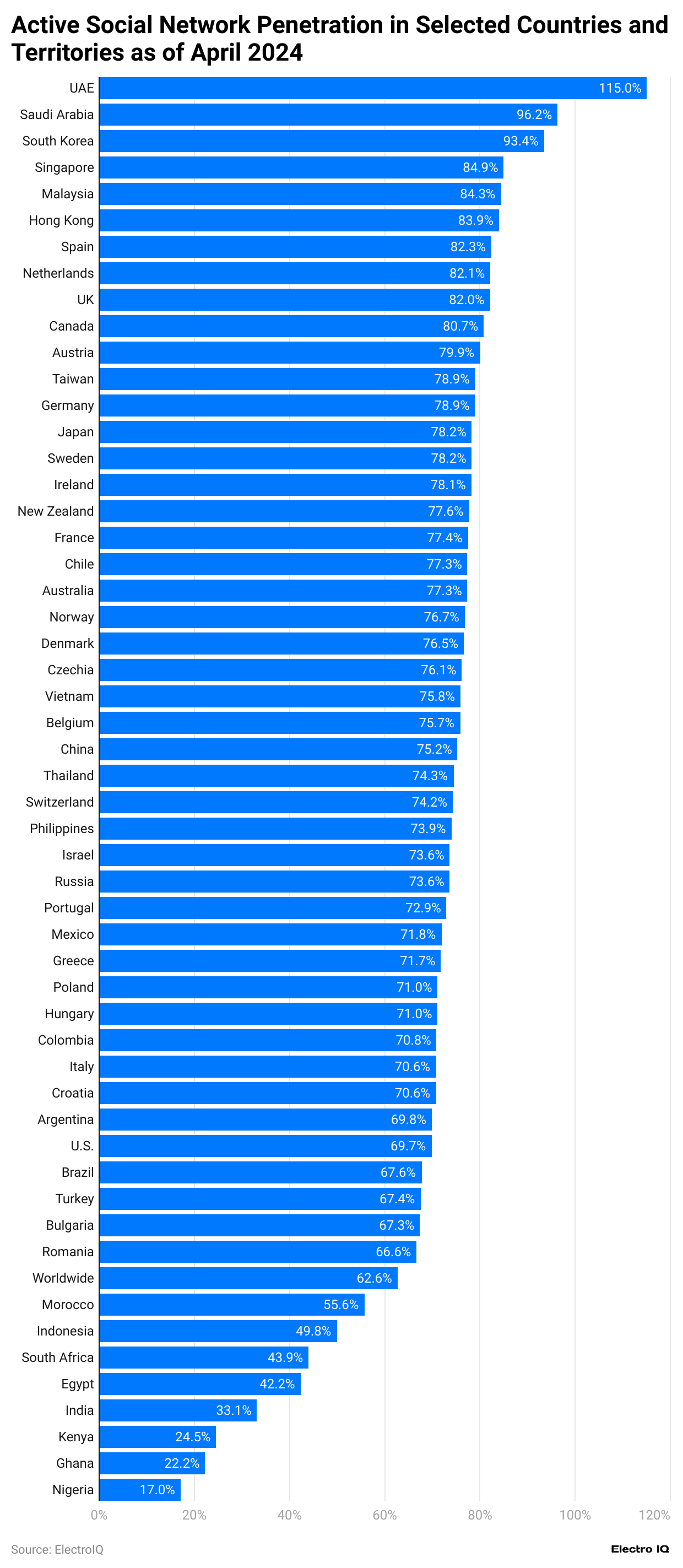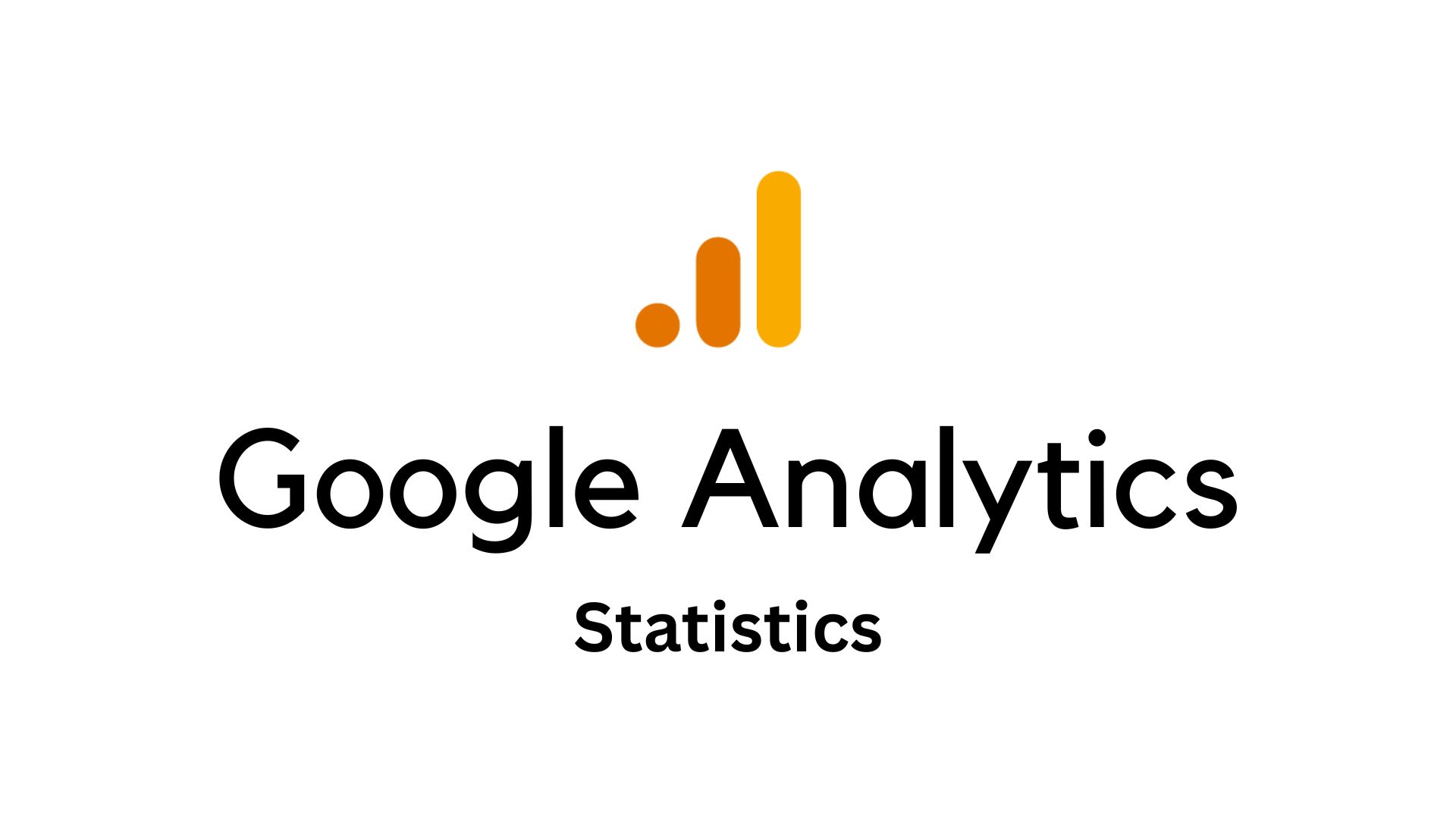Cyberbullying Statistics By Exposure, Online Risk And Social Media
Updated · Dec 11, 2024

Table of Contents
- Introduction
- Editor’s Choice
- Social Media User’s Growth
- Global Social Network Penetration
- Social Media Companies Revenue
- Social Network Users
- Active Social Network Penetration
- Risk of Cyberbullying Worldwide
- Worry About Exposure to Cyberbullying
- Teens Experiencing Online Risk
- Different Online Risks (Based on Severity)
- Online Harassment and Bullying Content on Facebook
- Online Harassment Content on Instagram
- Objectionable Content on Twitter
- Cyberbullying in Snapchat
- Conclusion
Introduction
Cyberbullying Statistics: In an increasingly digital world, social media and online platforms have become integral to our daily lives, connecting billions globally. However, this connectivity comes with significant challenges, particularly the rising concern of cyberbullying. By going through the Cyberbullying Statistics, we can learn about the toxic effects of social media, such as digital harassment, hate speech, and harmful content.
Hence, it is important to shed light on the complex landscape of digital interactions and the urgent need for awareness, prevention, and intervention strategies.
Editor’s Choice
- Over 5 billion social media users expected by 2024, increasing cyberbullying exposure
- Global social network penetration to reach 75.31% by 2028
- Meta’s revenue grew from 12,466 million USD in 2014 to 134,902 million USD in 2023
- China leads in social network users with 1,069.93 million in 2023
- UAE has the highest social network penetration at 115%
- Global cyberbullying risk stands at 20%
- South Africa reports the highest cyberbullying risk at 36%
- 72% of females feel online risks compared to 68% of males
- Hate speech is the most prominent online risk worldwide
- Facebook saw 7.8 million bullying content items in Q2 2024
- Instagram experienced 10.1 million bullying content items in Q2 2024
- X (Twitter) suspended 1,105,139 accounts in the first half of 2024
- Snapchat reported 6,645,969 accounts for harassment and bullying
- 37% of respondents consider cyberbullying a high-risk issue
- 53% of female and 51% of male respondents feel at risk of misinformation
Social Media User’s Growth
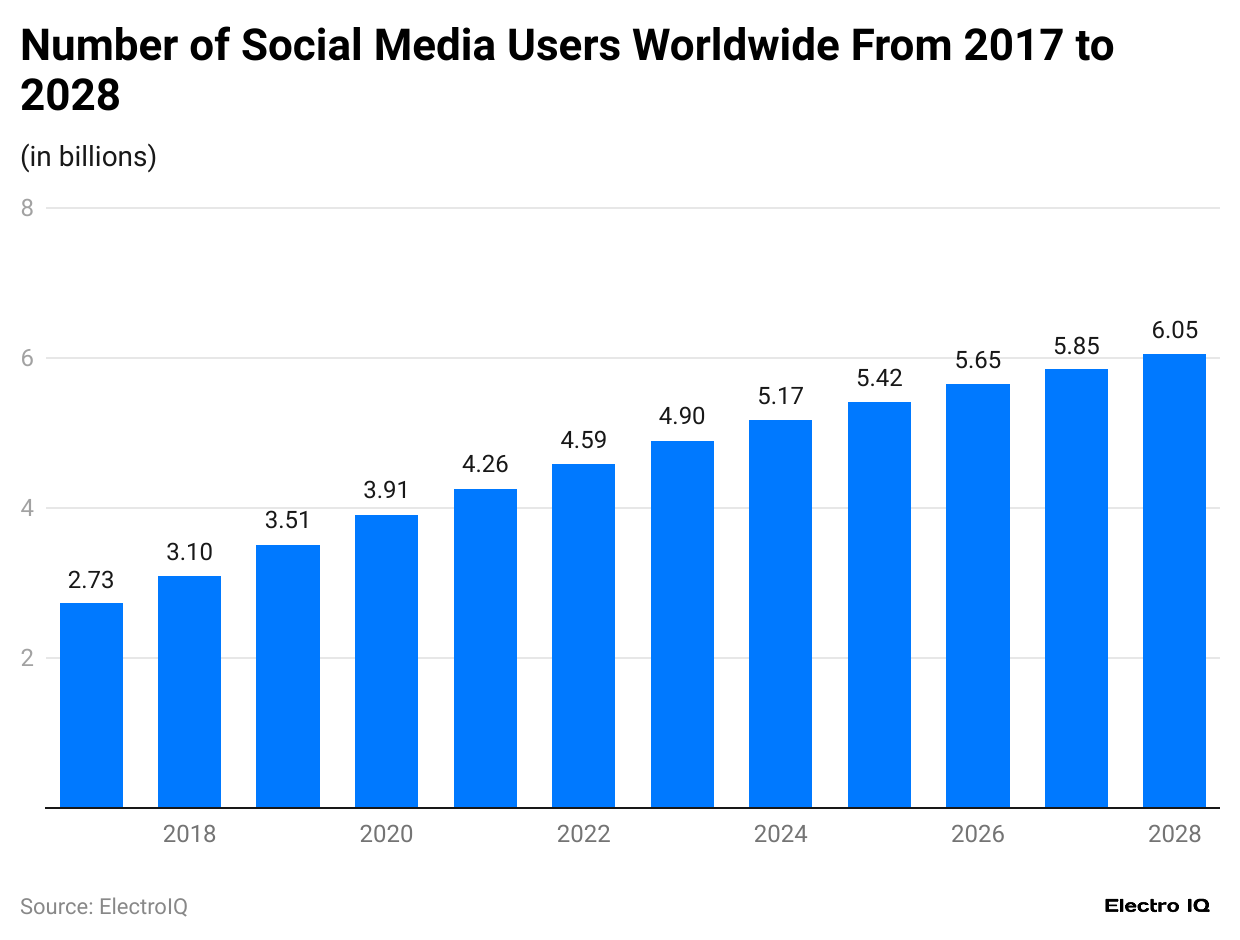
(Reference: statista.com)
- Cyberbullying Statistics show that the number of social media users has been increasing consistently over time.
- In 2017, there were 2.73 million users.
- As of 2023, there were 4.9 million users.
- It is estimated that by the end of 2028, there will be 6.05 million users.
Global Social Network Penetration
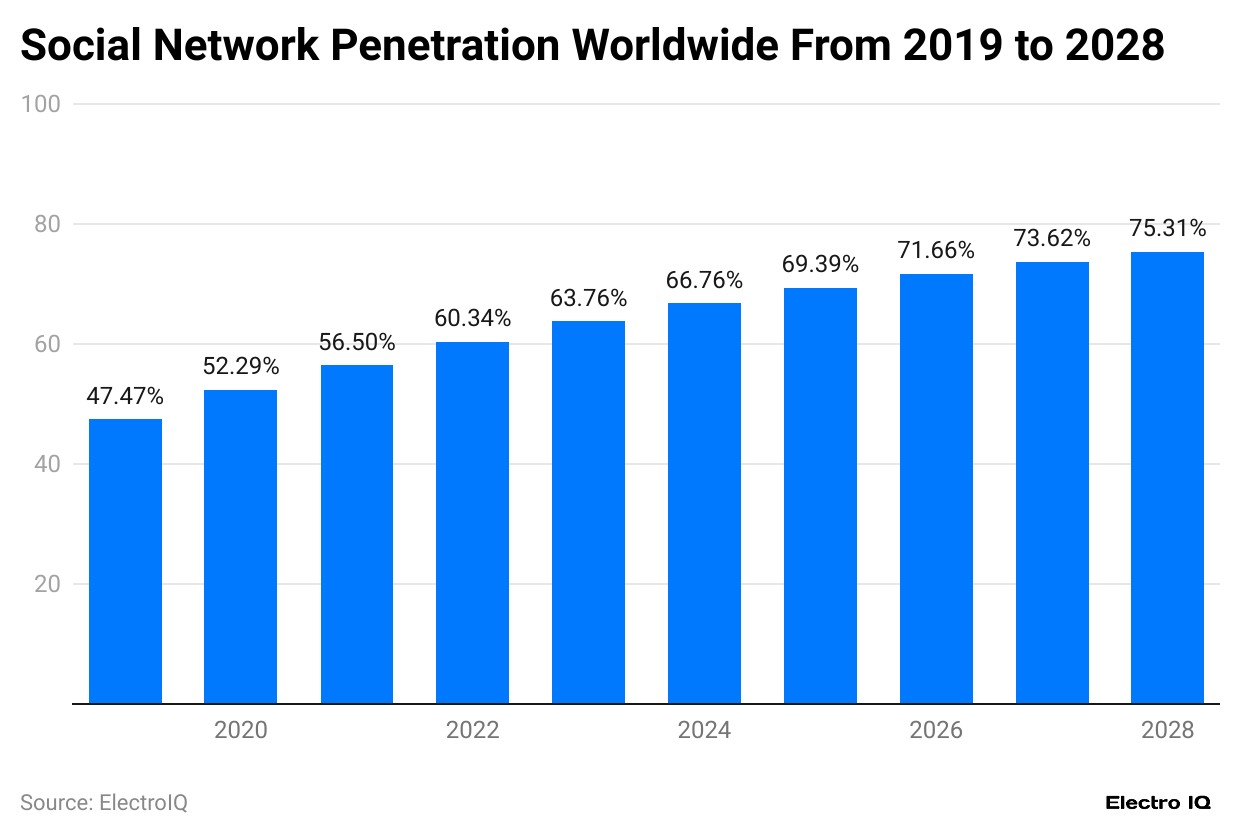
(Reference: statista.com)
- Cyberbullying Statistics show that social network penetration worldwide has been consistently increasing over time.
- In 2019, the penetration of social networks was 47.47%.
- As of 2023, the penetration rate is 63.76%.
- It is predicted that by 2028, the social network penetration will be 75.31%.
Social Media Companies Revenue
(Reference: statista.com)
- Cyberbullying Statistics show that Meta has been a leading social media company since 2014 - 2023.
- In 2014, Meta's revenue was 12,466 million USD.
- As of 2023, Meta's revenue was USD 134902 million.
Social Network Users
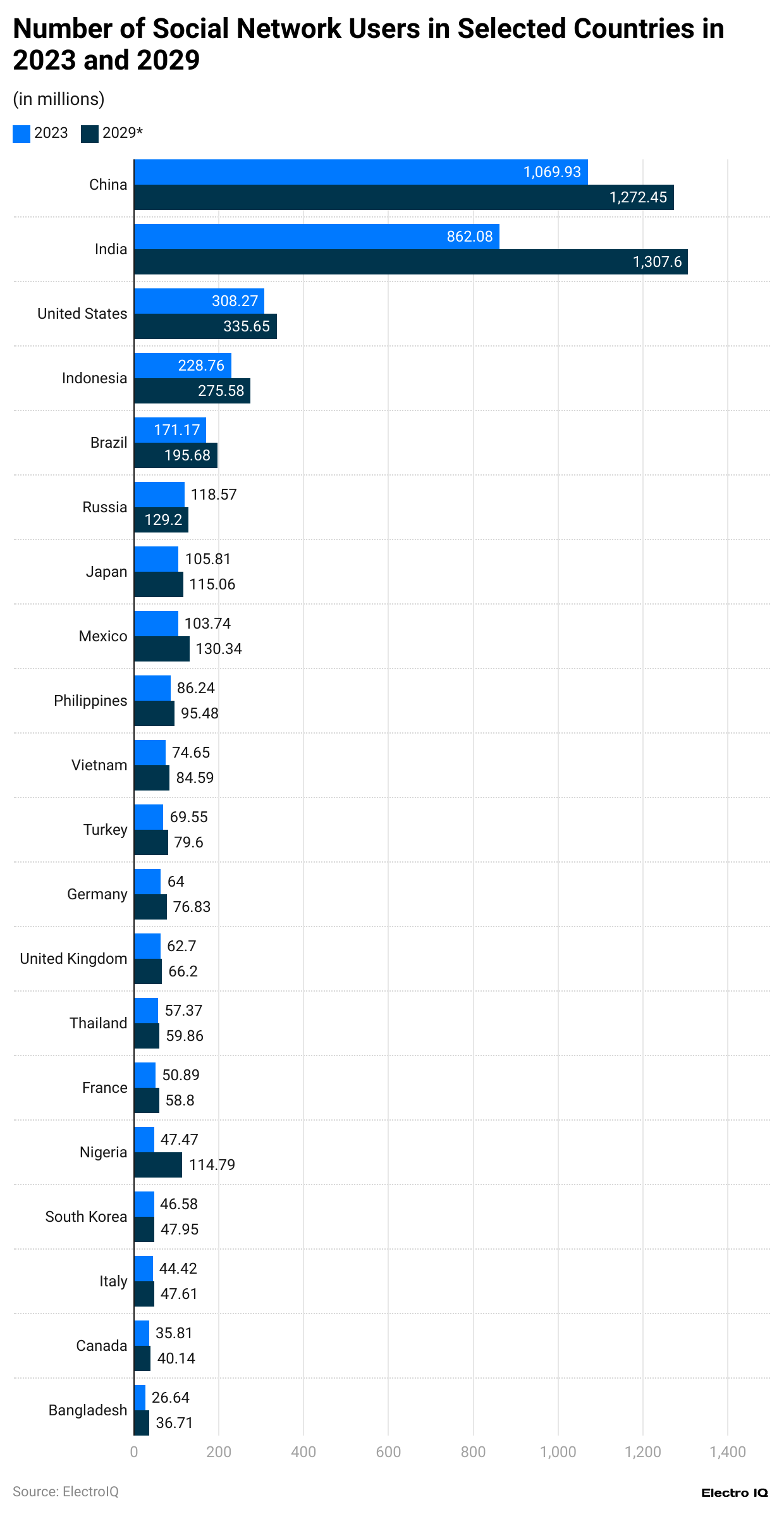
(Reference: statista.com)
- Cyberbullying Statistics show that China is the leading country in social media users, with 1,069.93 in 2023 and predicted 1272.45 million users in 2029.
- India has 2nd highest number of social network users, with 862.08 million users in 2023 and predicted users with 1307.6 million in 2029.
- The United States has the third highest number of social network users, with 335.65 million users in 2023 and predicted users of 308.27 million in 2029.
- Indonesia has the fourth highest number of social network users, with 275.58 million users in 2023 and predicted users of 228.76 million in 2029.
- Brazil has the fifth highest number of social network users, with 195.68 million users in 2023 and predicted users of 171.17 million in 2029.
Active Social Network Penetration
(Reference: statista.com)
- Cyberbullying Statistics show that when it comes to social network penetration, the UAE is the highest, with 115%.
- Saudi Arabia has 2nd highest social network penetration, with 96.2%.
- South Korea has the third highest social network penetration, with 93.4%.
- Singapore has the fourth highest social network penetration, with 84.9%.
- Malaysia has the fifth highest social network penetration, with 84.3%.
- Hong Kong has the sixth highest social network penetration, with 83.9%.
Risk of Cyberbullying Worldwide
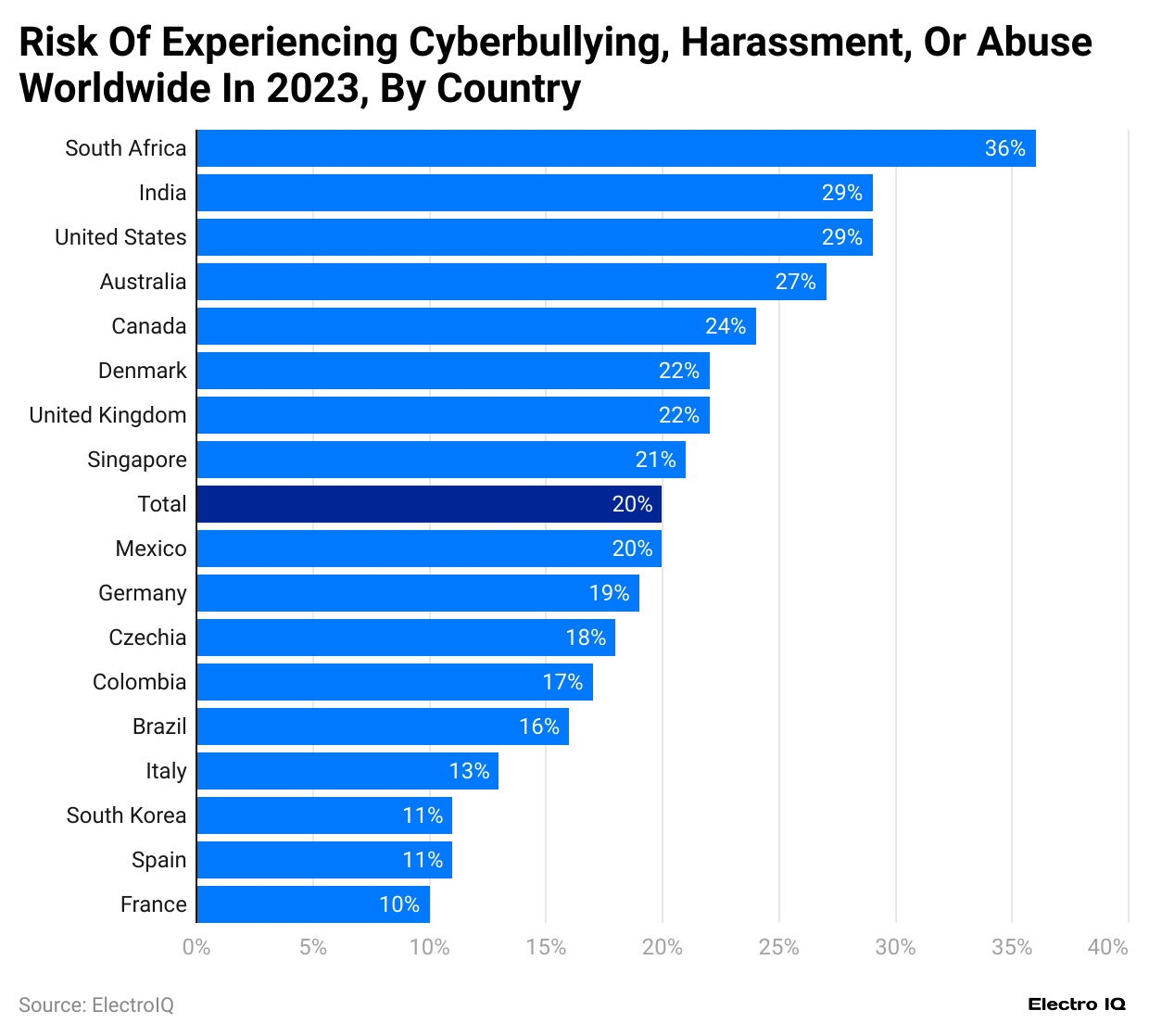
(Reference: statista.com)
- Cyberbullying Statistics show that globally, there is a 20% risk of cyberbullying.
- South Africa experiences the highest risk of cyberbullying, according to 36% of respondents.
- India has 2nd highest risk of cyberbullying, according to 29% of respondents.
- The United States has the third highest risk of cyberbullying, according to 29% of respondents.
- Australia has the fourth highest risk of cyberbullying, according to 27% of respondents.
- Canada has the fifth highest risk of cyberbullying, according to 24% of respondents.
- Denmark has the sixth highest risk of cyberbullying, according to 22% of respondents.
Worry About Exposure to Cyberbullying
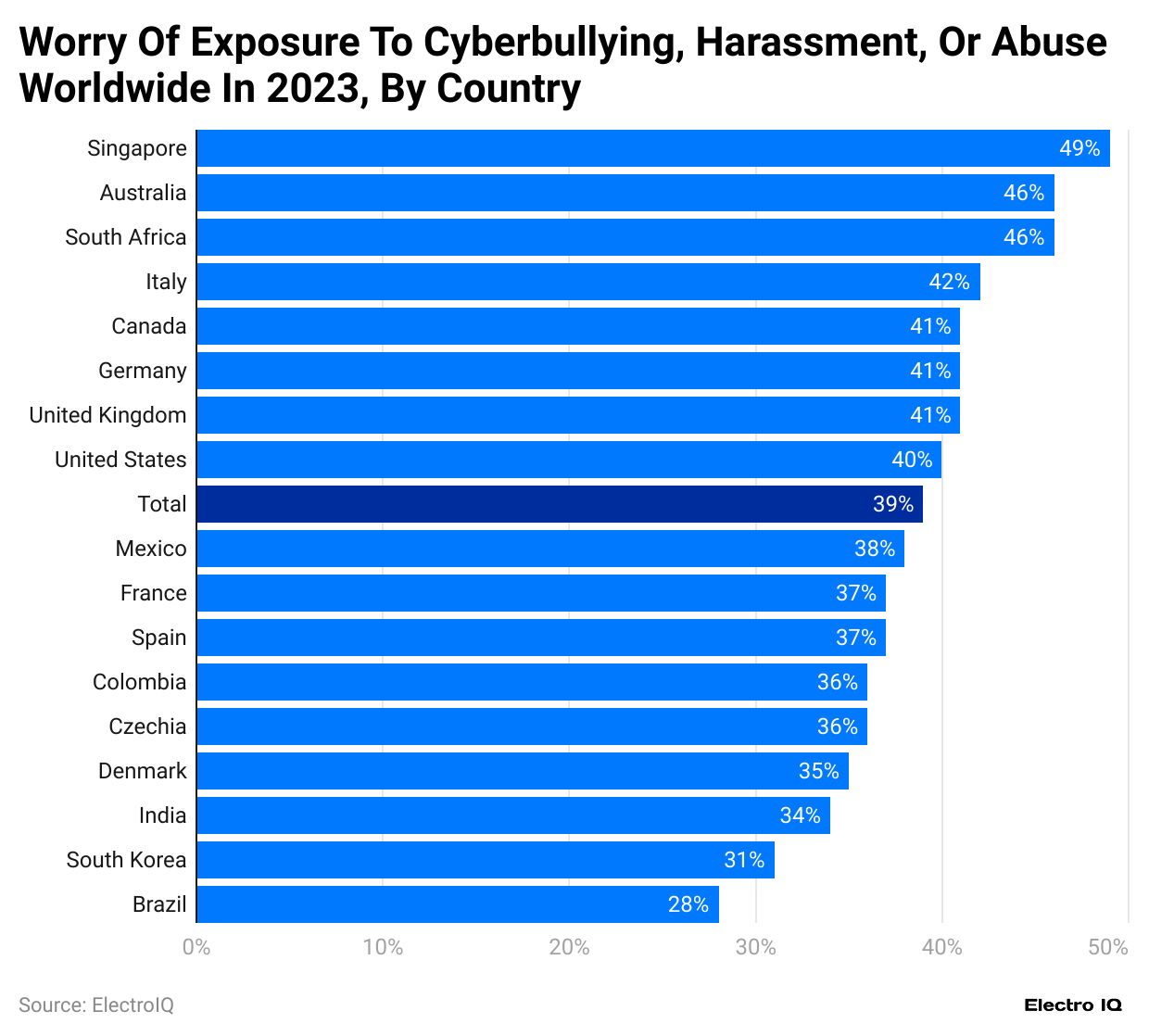
(Reference: statista.com)
- Cyberbullying Statistics show that globally, according to 39% of respondents.
- According to 49% of respondents, Singapore has the highest exposure risk.
- According to 46% of respondents, Australia has the 2nd highest exposure risk.
- According to 42% of respondents, Italy has the third-highest exposure risk.
- According to 41% of respondents, Canada, Germany, and the United Kingdom have the fourth-highest exposure risk.
- According to 40% of respondents, the United States has the fifth-highest exposure risk.
Teens Experiencing Online Risk
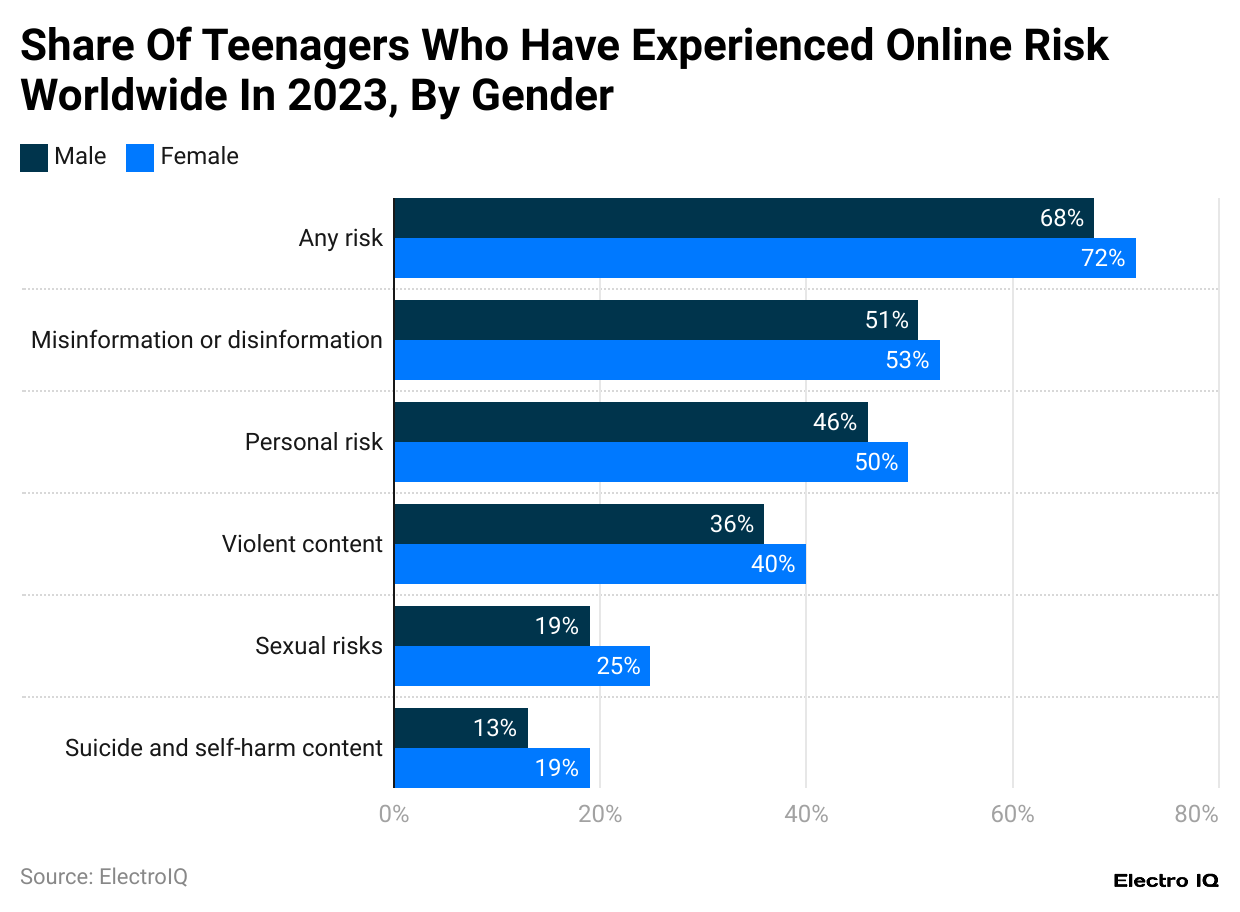
(Reference: statista.com)
- Cyberbullying Statistics show that 72% of female respondents feel there is any risk, while 68% of male respondents feel the same.
- 53% of female respondents feel at risk of misinformation or disinformation, while 51% of male respondents feel the same.
- 50% of female respondents feel at personal risk, while 46% of male respondents feel the same.
- 40% of female respondents feel exposed to violent content, while 36% of male respondents feel the same.
- 25% of female respondents feel at sexual risk, while 19% of male respondents feel the same.
- 19% of both female and male respondents feel exposed to suicide and self-harm content
Different Online Risks (Based on Severity)
(Reference: statista.com)
- Cyberbullying Statistics show that hate speech is the most prominent online risk worldwide. According to 29% of respondents, it is low risk; for 43% of respondents, it is medium risk; and for 53% of respondents, it is high risk,
- Cyberbullying is the second most prominent online risk worldwide. According to 16% of respondents, it is a low risk; for 26% of respondents, it is a medium risk; and for 37% of respondents, it is a high risk.
- Threats of violence are the third most prominent online risk worldwide. According to 12% of respondents, it is a low risk; for 20% of respondents, it is a medium risk; and for 32% of respondents, it is a high risk.
- Cyberbullying is the second most prominent online risk worldwide. According to 16% of respondents, it is a low risk; for 26% of respondents, it is a medium risk; and for 37% of respondents, it is a high risk.
- Threats of violence are the third most prominent online risk worldwide. According to 12% of respondents, it is a low risk; for 20% of respondents, it is a medium risk; and for 32% of respondents, it is a high risk.
Online Harassment and Bullying Content on Facebook
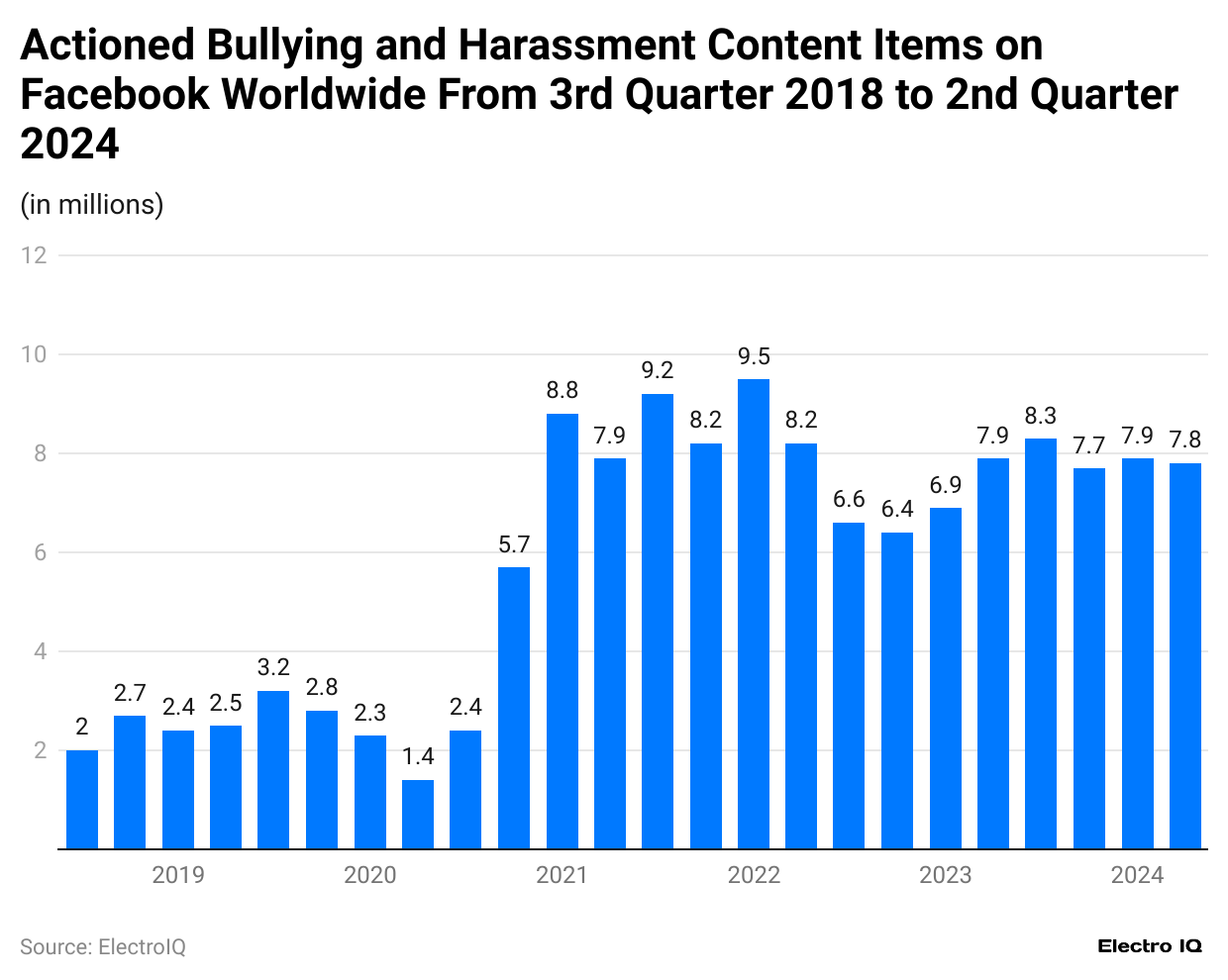
(Reference: statista.com)
- Cyberbullying Statistics show that online harassment and bullying content items on Facebook have been fairly consistent, which is a sign of worry.
- In 2018 Q1, there were 2 million bullying and harassment content on Facebook.
- As of Q2 2024, the bullying content on Facebook was 7.8 million.
- Between 2018 Q3 and 2024 Q2, the highest amount of bullying and harassment-related posts on Facebook were observed in 2022 Q1, with 9.5 million objectionable items.
Online Harassment Content on Instagram
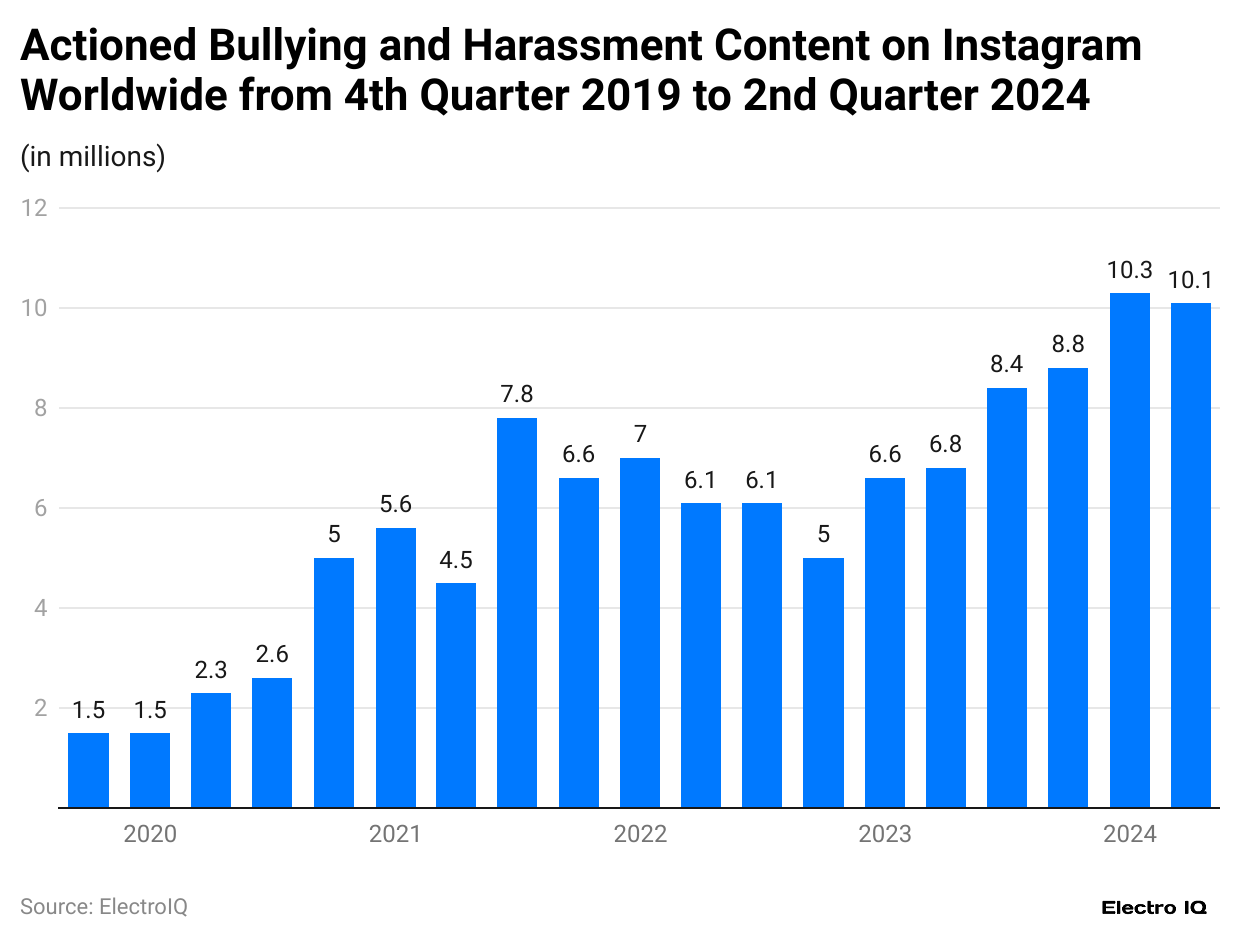
(Reference: statista.com)
- Cyberbullying statistics show a significant and concerning rise in bullying and harassment content items over the years.
- In 2019 Q4, 1.5 million bullying and harassment content items were posted on Instagram.
- As of Q2 2024, the bullying content on Instagram was 10.1 million.
- Between 2019 Q4 and 2024 Q2, the most bullying and harassment-related posts on Instagram were observed in 2023 Q4, with 10.3 million objectionable items.
Objectionable Content on Twitter
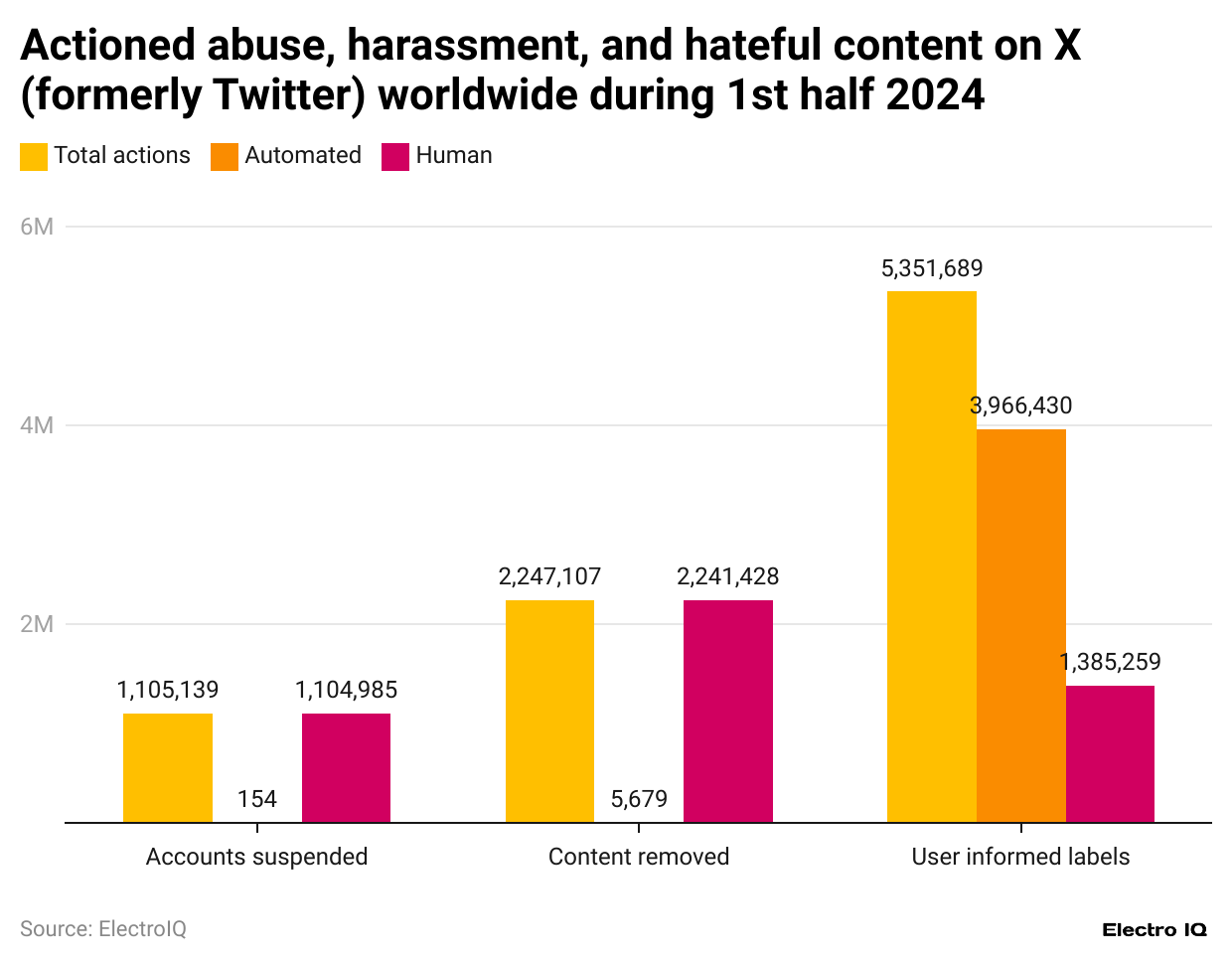
(Reference: statista.com)
- Cyberbullying Statistics in X (formerly known as Twitter) during 1st half of 2024, 1105139 accounts were suspended, out of which 154 were automated and 1,104985 were done with human intervention.
- During the 1st half of 2024, 2,247,107 pieces of content were removed, of which 5,679 were automated, and 2,241,428 were done with human intervention.
- During the 1st half of 2024, 5,351,689 user-informed labels were addressed, of which 3,966,430 were automated and 1,385,259 were done with human intervention.
Cyberbullying in Snapchat
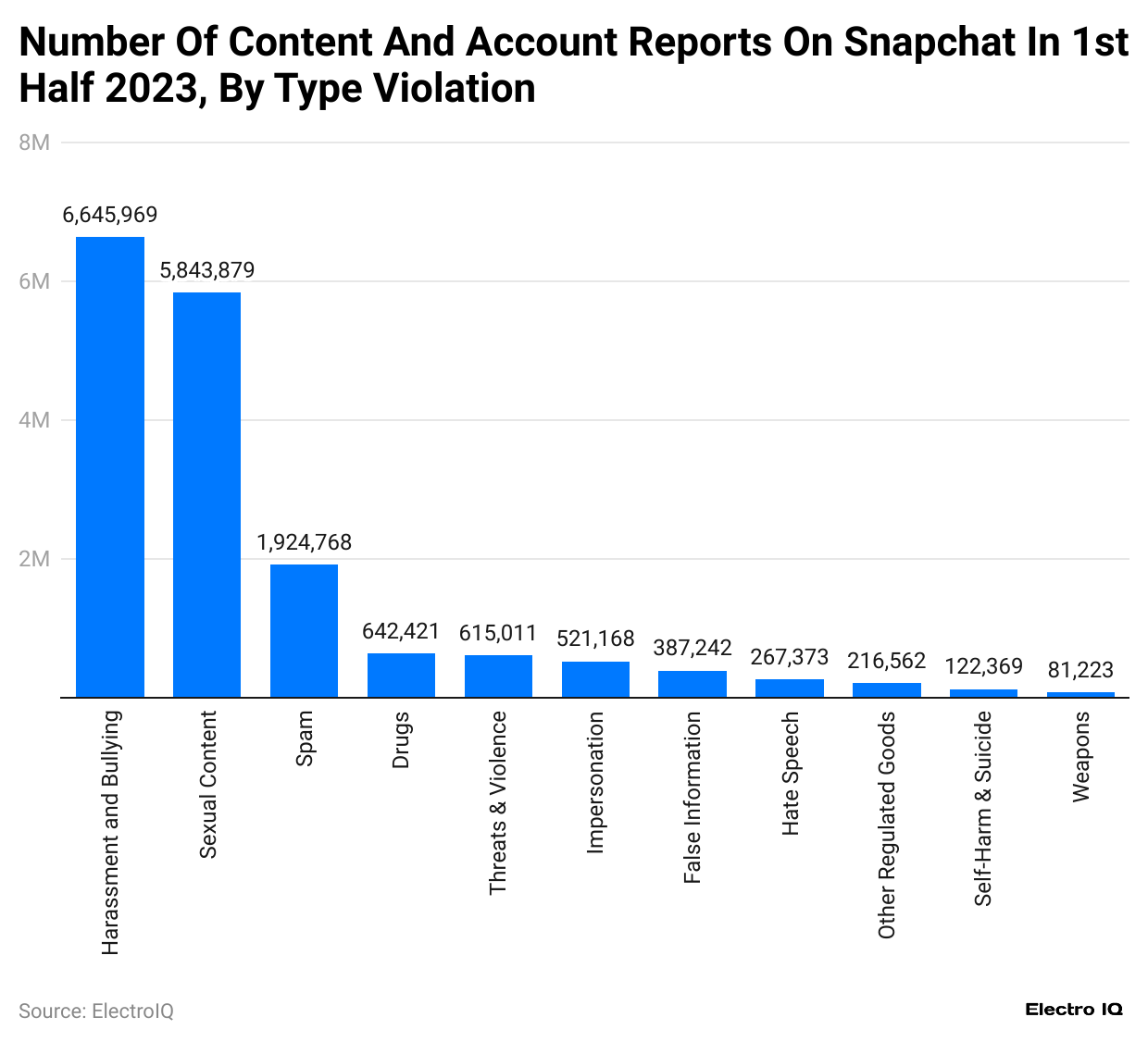
(Reference: statista.com)
- Cyberbullying Statistics show that harassment and bullying are the highest aspects of cyberbullying on Snapchat, with 6645969 accounts reported for it.
- Sexual content is the second-highest reported violation, with 5,843,879 accounts reported.
- Spam is the third highest reported issue, with 1,924,768 accounts reported.
- Drug violations were reported 642,421 times.
- Threats and violence were reported 615,011 times.
Conclusion
The landscape of digital interaction reveals a complex and concerning picture of online risks, particularly cyberbullying. Cyberbullying Statistics show that as social media usage continues to surge globally, reaching an anticipated 6.05 billion users by 2028, the challenges of digital harassment become increasingly prominent.
As we move forward, collaborative efforts from technology companies, educators, policymakers, and communities are crucial in developing proactive prevention strategies, promoting digital literacy, and creating safer online environments. Awareness, education, and technological interventions will be key in mitigating the growing threat of cyberbullying and protecting vulnerable internet users.
Sources
FAQ.
The global cyberbullying risk is approximately 20% across different countries.
South Africa reports the highest cyberbullying risk, with 36% of respondents experiencing it.
Females report slightly higher online risks at 72% compared to 68% for males.
Around 6.05 billion social media users are projected by 2028.
Hate speech is the most prominent online risk, with 53% of teenagers reporting high-risk levels.
Snapchat reported 6,645,969 accounts for harassment and bullying.
China had 1,069.93 million social network users in 2023.
40% of females and 36% of males feel exposed to violent content online.
Instagram had 10.1 million bullying content items in Q2 2024.
Social network penetration is expected to reach 75.31% by 2028.

Maitrayee Dey has a background in Electrical Engineering and has worked in various technical roles before transitioning to writing. Specializing in technology and Artificial Intelligence, she has served as an Academic Research Analyst and Freelance Writer, particularly focusing on education and healthcare in Australia. Maitrayee's lifelong passions for writing and painting led her to pursue a full-time writing career. She is also the creator of a cooking YouTube channel, where she shares her culinary adventures. At Smartphone Thoughts, Maitrayee brings her expertise in technology to provide in-depth smartphone reviews and app-related statistics, making complex topics easy to understand for all readers.

